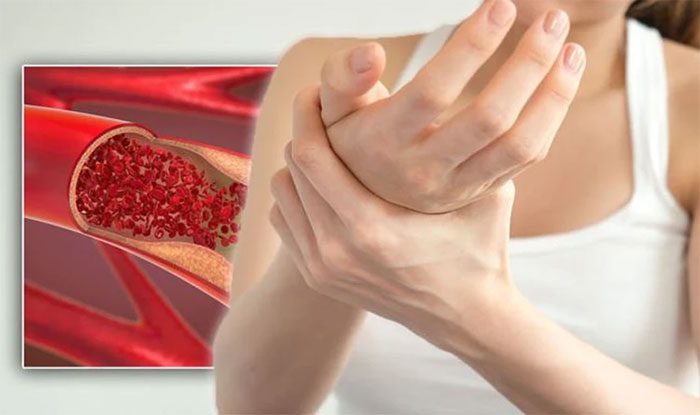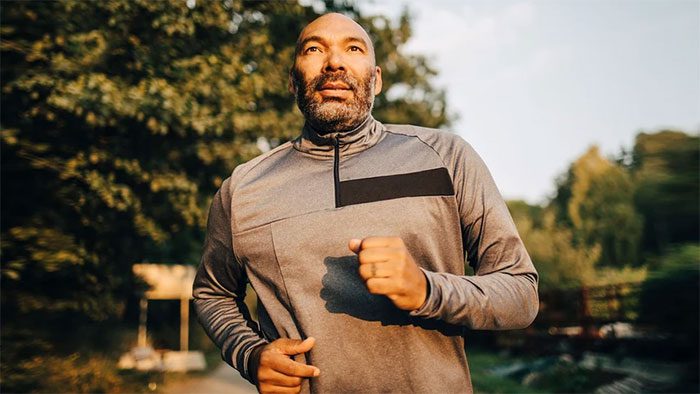If you are experiencing health issues caused by blood clots, it’s important to build a suitable lifestyle and diet to avoid aggravating the problem.
Important Things to Know When Detecting a Blood Clot
A blood clot, also known as a thrombus, can lead to serious health issues such as stroke. Therefore, when a blood clot is detected, there are certain things you should and shouldn’t do to protect your health.
1. How Do Blood Clots Form?
A blood clot forms when platelets, proteins, and cells in the blood stick together. Essentially, the clotting process is necessary in certain situations, such as when injured, as it prevents blood loss. However, if a blood clot forms inside a vein and travels to blood vessels in the limbs, lungs, brain, heart, or kidneys, it can become dangerous or even life-threatening.
A blood clot that forms in the deep veins, usually in the legs or arms, is known as Deep Vein Thrombosis (DVT). If these clots break off and travel to the lungs, this condition is called Pulmonary Embolism (PE), which requires immediate medical attention.
The symptoms of a blood clot can vary based on its location. Here are common signs to be aware of when detecting a blood clot:
- Swelling or inflammation, usually in one leg or arm
- Leg pain similar to cramping
- Skin color changes to red or slightly blue
- Warmth in the leg or arm when touched
- Sudden shortness of breath, severe chest pain (which may worsen when inhaling), and coughing or coughing up blood
- Faster than normal or irregular heartbeat
Individuals at high risk of developing blood clots include older adults, those who are overweight or obese, those with a family history of venous thrombosis, cancer patients, and those during and shortly after pregnancy, as well as those taking estrogen-based medications like hormonal contraceptives or hormone replacement therapy, and individuals who have experienced injuries.

A swollen leg or arm, or skin discoloration to red or slightly blue, are common symptoms when a blood clot appears. (Photo: Internet).
2. Recommended Actions When Detecting a Blood Clot
When you detect a blood clot, it is crucial to see a doctor for examination, treatment, and advice. Additionally, patients should pay attention to the following tips to ensure health and prevent dangerous conditions:
Monitor for Other Symptoms of Blood Clots
If you have Deep Vein Thrombosis in one of your legs or arms, slight swelling in that limb after treatment is normal, but be alert for new or worsening pain and discoloration. Pressure and cramping can also signal a new blood clot.
Understand Your Health Condition
If you have previously had a blood clot, the likelihood of developing another one is higher. Your risk is also increased if you have health issues such as:
- Cancer
- Using hormonal contraceptives or estrogen hormone therapy
- Chronic conditions like heart and lung diseases, or diabetes
- Blood clotting disorders
- Being over 40 years old
- Being overweight or obese
- Sitting for prolonged periods, especially with crossed legs
Engage in Appropriate Physical Activity
Activities such as walking and swimming can promote blood circulation and help you recover after experiencing a blood clot. Staying active can also improve your self-esteem and prevent future blood clots.
If you have a pulmonary embolism due to a blood clot, activities that raise your heart rate, like running or dancing, can strengthen your lungs.
However, the level of physical activity should depend on several factors, including your age, other health conditions you may have, and the time elapsed since discovering any health issues related to blood clots. Therefore, you should discuss with your doctor what level of exercise is appropriate for you.

Activities such as walking and swimming can help blood circulation and aid recovery after experiencing a blood clot. (Photo: Internet).
Discuss Other Medications with Your Doctor
Aspirin may interact with warfarin and other blood thinners, increasing the risk of severe bleeding. Some antibiotics can also affect the efficacy of medications. You should also be cautious with over-the-counter herbal supplements, including ginseng, flaxseed, and fish oil.
Use Compression Stockings
These special tight-fitting stockings apply certain pressure to your legs, which can help improve blood circulation after Deep Vein Thrombosis. Doctors may also recommend them after experiencing a pulmonary embolism to enhance your circulation.
Stay Hydrated
Dehydration contributes to slow blood flow, which can lead to clotting. Dehydration also tends to exacerbate the formation of blood clots due to blood not moving effectively through the veins.
Therefore, staying hydrated is especially crucial, especially when you are inactive for extended periods. Aim to drink 8 to 10 glasses of water each day to promote optimal blood flow.

Staying hydrated to promote blood flow in the lower limbs can help prevent blood clots. (Photo: Internet).
Maintain a Relaxed Mindset
Stress can raise blood pressure and cause inflammation in the body. Both of these factors contribute to an increased risk of clotting or worsening existing conditions, leading to heart attacks and strokes.
Thus, to manage your health conditions, you should keep your mind relaxed and happy through activities like meditation, yoga, and sharing with others.
Manage Your Weight
People who are overweight or obese are at a higher risk of developing blood clots because excess weight makes it harder for blood in the legs to return to the heart and lungs. Additionally, obesity increases risk factors that can affect clotting, including insulin resistance and chronic inflammation. These factors can enhance platelet activity, increasing the likelihood of clot formation.
For these reasons, you should manage your weight or lose weight if you are overweight. Focus on eating a variety of fruits, vegetables, whole grains, and healthy protein sources like legumes, nuts, fish, and low-fat dairy. At the same time, limit processed foods and added sugars.
Exercise Caution During Pregnancy
Women who have previously had Deep Vein Thrombosis or pulmonary embolism are at higher risk of developing these conditions again during pregnancy. It is crucial to closely monitor your health if you are pregnant and have regular check-ups.
3. What Not to Do When Detecting a Blood Clot
In addition to recommended actions, individuals who detect a blood clot should be aware of the following things to avoid to protect their health:
Avoid Sitting for Too Long
Set a timer to remind yourself to stand and move every 2 hours. If you have a blood clot in your leg, try to avoid crossing your legs while sitting and do not remain seated for too long.
Avoid Eating the Wrong Foods
If you are taking certain medications like warfarin, you will need to monitor your diet closely. Vitamin K can interact with the medication, so be cautious with foods like kale, spinach, Brussels sprouts, turnips, and collard greens. Green tea, cranberry juice, and alcohol can also affect blood thinners, so consult your doctor about which foods you should avoid.
Don’t Injure Yourself
If your doctor prescribes blood-thinning medication, it may increase your risk of bleeding from minor injuries. Therefore, be extra cautious when chopping vegetables and even when trimming your nails. It is advisable to wear safety equipment and appropriate gloves when working with sharp tools, and consult your doctor about any activities you should avoid.


















































